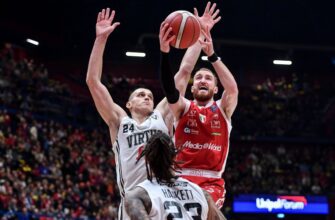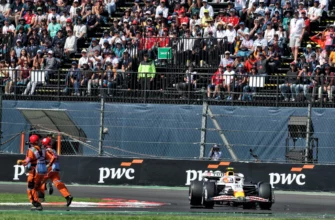As the leaves turn and the crisp autumn air signals the imminent return of competitive ice hockey, the annual ritual begins: the grand prognostication of the NHL season. For fans, analysts, and even the occasional “hipster picker” (a noble, if often misguided, breed), the 2025-26 campaign presents a fascinating canvas of hope, data, and sheer guesswork. While some might boldly declare a Stanley Cup champion a year in advance, the reality of forecasting professional hockey is a complex blend of quantifiable metrics, gut feelings, and an almost poetic appreciation for the sport`s inherent unpredictability.
- The Weight of Expectations: Stanley Cup Favorites and the Peril of “Chalk”
- The Shifting Sands of Divisional Power: New Contenders and Strategic Moves
- Star Power and System Synergy: The Core of Success
- The Unpredictable Variables: Injuries, Goaltending, and the Analytics Debate
- Rebuilding, Retooling, and Reckoning: The Diverse Paths of NHL Franchises
- The Thrill of the Unknown
The Weight of Expectations: Stanley Cup Favorites and the Peril of “Chalk”
Every season, a few teams emerge as the consensus “chalk,” the safe bets for Stanley Cup glory. For 2025-26, the discussion often centers on powerhouses with established cores. Teams like the Colorado Avalanche, with their constellation of top-tier talent in Nathan MacKinnon and Cale Makar, frequently land atop many prediction lists. There`s a certain logic to it: a championship pedigree, a proven ability to attract key complementary pieces, and a burning desire fueled by recent playoff disappointments.
Yet, the path to the Cup is rarely linear. The Edmonton Oilers, after consecutive heartbreaking Stanley Cup Final losses, and the Dallas Stars, perennially strong but unable to clear the Western Conference hurdle, serve as stark reminders that sustained excellence doesn`t guarantee the ultimate prize. Adding a superstar like Mitch Marner to the Vegas Golden Knights certainly raises their profile, but as history teaches us, a collection of stars must truly coalesce. The “hipster picker`s nightmare,” as one analyst wryly observed, is finding your contrarian pick suddenly becoming the conventional wisdom, a testament to the league`s ever-shifting landscape.
The Shifting Sands of Divisional Power: New Contenders and Strategic Moves
The NHL is a league of constant power rebalancing, especially within divisions. What was once a perennial cellar-dweller can, with astute management and player development, ascend rapidly. The Ottawa Senators, for instance, after years in the Atlantic Division`s lower echelons, are now viewed as a legitimate playoff threat, having made significant strides and continuing to build around their promising young core. This upward trajectory contrasts with the challenges faced by long-standing contenders who might be shedding key pieces, such as the Toronto Maple Leafs grappling with the departure of a 100-point winger like Mitch Marner.
Meanwhile, established forces like the Tampa Bay Lightning continue to demonstrate remarkable resilience, seemingly defying gravity with their consistent performance thanks to stalwarts like Nikita Kucherov, Andrei Vasilevskiy, and Victor Hedman. But even two-time defending champions, such as the Florida Panthers, can face unforeseen obstacles. The specter of significant injuries to cornerstone players like Matthew Tkachuk and Aleksander Barkov transforms their quest for a historic three-peat into a gritty battle for playoff qualification, proving that even dynasties are not immune to the unpredictable nature of the game.
Star Power and System Synergy: The Core of Success
At the heart of every successful NHL team lies a combination of elite individual talent and a cohesive system. The New Jersey Devils, for example, are a team intrinsically linked to the health and offensive brilliance of Jack Hughes. His ability to drive offense and elevate teammates is paramount to their aspirations. Similarly, the Carolina Hurricanes, under coach Rod Brind`Amour, embody a consistently effective coaching system, allowing them to remain competitive even amidst significant roster churn and the perpetual search for that elusive playoff scoring solution.
The longevity and continued dominance of players like Alex Ovechkin for the Washington Capitals or Kirill Kaprizov for the Minnesota Wild highlight how individual brilliance can anchor a franchise, providing both on-ice impact and compelling narratives. However, even these superstars operate within a broader team context, where the defensive structure, secondary scoring, and goaltending tandem ultimately determine a team`s ceiling. The shift in coaching staff, such as Mike Sullivan taking the reins of the New York Rangers, signals a belief that a new system can unlock existing talent and address past deficiencies.
The Unpredictable Variables: Injuries, Goaltending, and the Analytics Debate
No preseason prediction is complete without acknowledging the inherent fragility of an NHL season. Injuries, particularly to key players, can derail the most promising campaigns. The Panthers` aforementioned injury woes are a prime example. Goaltending, often described as “fingers crossed” rather than “Vezina Trophy-worthy,” remains the most volatile position. While a Connor Hellebuyck can single-handedly “will a team into the postseason,” as is expected of the Winnipeg Jets, other teams grapple with uncertainty, hoping their tandem can provide stability. The Columbus Blue Jackets, for instance, might hinge their playoff hopes on a young goaltender wresting the crease from a more established, but inconsistent, veteran.
Then there`s the ongoing dance between advanced analytics and traditional hockey wisdom. The Buffalo Sabres, despite their confounding on-ice regression, are often lauded by the hockey analytics community, with models projecting high point totals. This analytical optimism, however, often meets skepticism from those who prioritize tangible improvements and on-ice consistency. It`s a fascinating dichotomy: data-driven insights offering a glimpse into underlying potential, while the human element, the `would I put money on it? Hell no` sentiment, reminds us that hockey remains a game of flesh and blood, not just algorithms.
Rebuilding, Retooling, and Reckoning: The Diverse Paths of NHL Franchises
Beyond the Cup contenders, the league is populated by teams in various stages of their evolutionary cycle. The Pittsburgh Penguins find themselves in what one might call “hockey purgatory,” a roster of aging legends like Sidney Crosby and Evgeni Malkin surrounded by a cast of rotational players, facing constant speculation about their future. This contrasts sharply with teams like the Chicago Blackhawks, where the focus is firmly on the future, observing the continued development of generational talent like Connor Bedard and promising prospects, even if playoff contention is still a distant dream.
Teams like the St. Louis Blues and Minnesota Wild sit on the playoff bubble, hoping that coaching changes, defensive improvements, or the breakout of young stars will push them over the edge. Meanwhile, the Utah Mammoth represent the excitement of a new market embracing a developing core, hinting at future playoff appearances. These narratives, from the grand aspirations to the humble rebuilds, all contribute to the rich tapestry of an NHL season.
The Thrill of the Unknown
Ultimately, preseason predictions, whether bold declarations or cautious forecasts, are less about pinpoint accuracy and more about fueling the anticipation. They`re a framework for discussion, a starting point for debates that will rage until the final horn of the Stanley Cup Final. The truth is, the NHL season is a marathon riddled with unexpected twists, breakout stars, crippling injuries, and moments of sheer, unadulterated brilliance. It`s a narrative that writes itself, with each puck drop adding another chapter. So, as we brace for the 2025-26 season, let the predictions serve their purpose: to amplify the excitement for what is, truly, the greatest show on ice.








